First Quarter Moon, Uposatha, May 28, 2012 Series Index
Individualism in American Folk Buddhism.
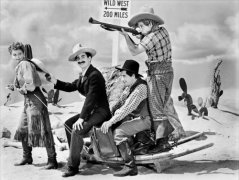 America is traditionally a land that values, or at least thinks it does, “rugged individualism,” self-reliance, freedom from the dictates of society and forming one’s own views about things. We are, after all, primarily a people created of wave after wave of immigration from various kinds of foreign oppression, and then also to a large extent heirs of the pioneers who within our own continent and through most of our history moved ever further westward away from the bustle of society until it caught up with us. To this very day we tend to be restlessly unrooted from community and place. American individualism is an extreme form of the European trend which has long advocated the value of the individual, of self-interest, of individual rights in politics, economics and philosophy, ideas that must until recently probably seemed bizarre in much of Asia.
America is traditionally a land that values, or at least thinks it does, “rugged individualism,” self-reliance, freedom from the dictates of society and forming one’s own views about things. We are, after all, primarily a people created of wave after wave of immigration from various kinds of foreign oppression, and then also to a large extent heirs of the pioneers who within our own continent and through most of our history moved ever further westward away from the bustle of society until it caught up with us. To this very day we tend to be restlessly unrooted from community and place. American individualism is an extreme form of the European trend which has long advocated the value of the individual, of self-interest, of individual rights in politics, economics and philosophy, ideas that must until recently probably seemed bizarre in much of Asia.
Yet individualism resonates with much in Essential Buddhism, with its emphasis on turning within, on personal practice and development, on individual effort, on seclusion. Each of us practices in the realm of karma and no one can do our practice for us.
I am the owner of my actions (kamma), heir to my actions, born of my actions, related through my actions, and have my actions as my arbitrator. Whatever I do, for good or for evil, to that will I fall heir. – AN 5.57
Consider that our most profound experiences of insight and attainment of stages of Awakening are individual, not group, experiences. This is in contrast to many religious traditions, including the Vedic tradition against which the Buddha’s teachings were set, in which certain people are qualified often uniquely qualified to intercede on behalf of the individual’s destiny. Essential Buddhism represents a strong form of individualism, though not necessarily equivalent to American Folk individualism.
It is hardly surprising that individualism as a strong factor in American and Western culture should also be a strong factor in American and Western Folk Buddhism. Here, as with other aspects of Folk Buddhism, my interest will be in investigating to what extent its particular forms are friendly to, indifferent to or inimical to Essential Buddhism.
 Siddhartha. The individual seeker is a theme of Western mythology. It is also a Protestant ideal, to develop and individual relationship with God or Jesus. In Siddhartha, Hermann Hesse’s novel which inspired many people to begin to explore Buddhism, the protagonist chooses after actually meeting the Buddha to find his own path, much as the Buddha had found his own path a generation earlier, and rather than joining the Buddha’s order of ordained disciples, … and, after much tribulation and not as quickly as the Buddha had, succeeds!
Siddhartha. The individual seeker is a theme of Western mythology. It is also a Protestant ideal, to develop and individual relationship with God or Jesus. In Siddhartha, Hermann Hesse’s novel which inspired many people to begin to explore Buddhism, the protagonist chooses after actually meeting the Buddha to find his own path, much as the Buddha had found his own path a generation earlier, and rather than joining the Buddha’s order of ordained disciples, … and, after much tribulation and not as quickly as the Buddha had, succeeds!
We love guys like that, and find them also outside of the religious realm as well. When I was a kid I used to watch a TV show called McKale’s Navy, a comedy about a PT boat commander and his crew in the South Pacific during WWII. They rejected all conventions, displayed no hint of discipline, vexed the senior officers to no end through their escapades, yet when called to action they always engaged the enemy with such courage, skill (which seemed to materialize out of nowhere, since we never saw them doing things like target practice) and exemplary results that all previous transgressions of military discipline were always forgiven.
McKale-like qualities of are commonly attributed Zen in particular. Alan Watts tells us that its “ancient exponents were universal individualists” who did not belong to any organization nor relied on formal authority. This history of Zen in Tang China belies this from top to bottom, which became in fact very hierarchical and entrenched in Chinese society at an early age, yet quirkiness and iconoclasm is in fact part of the Zen lore that emerged in China in retrospect hundreds of years after the period of Zen’s ancient exponents, and this lore has particular appeal in American Folk Buddhism. I have often wondered just how long a tradition could recognizably survive in which everyone is actively overthrowing the tradition.
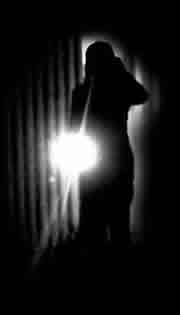 The Buddha asks us to be a lamp unto ourselves, and also sets us in a direction that goes against the stream, that is, it does not really make sense to conventional ways of thinking. In a sense American individualism is an asset and American Buddhism attracts some rather quirky individuals. Nonetheless it is important to find a balance: The Buddha gives us a guidebook so that while we are wandering in the wilderness being lamps unto ourselves, we don’t need to run into trees, stumble over rocks or plunge headlong down declivities as we seek our way. He also asked us to learn from one another, to find kalyanamitta, good spiritual friends, as sources of advice and inspiration as the foundation of any progress on our search. He set up a supportive community structure so that seekers might gain the space in their lives for their quest. And he set up a system of rigorous training so that our lamps might shine brightly. Be a light onto yourself, but be sure you are fully prepared and equipped, otherwise your task will be hopeless.
The Buddha asks us to be a lamp unto ourselves, and also sets us in a direction that goes against the stream, that is, it does not really make sense to conventional ways of thinking. In a sense American individualism is an asset and American Buddhism attracts some rather quirky individuals. Nonetheless it is important to find a balance: The Buddha gives us a guidebook so that while we are wandering in the wilderness being lamps unto ourselves, we don’t need to run into trees, stumble over rocks or plunge headlong down declivities as we seek our way. He also asked us to learn from one another, to find kalyanamitta, good spiritual friends, as sources of advice and inspiration as the foundation of any progress on our search. He set up a supportive community structure so that seekers might gain the space in their lives for their quest. And he set up a system of rigorous training so that our lamps might shine brightly. Be a light onto yourself, but be sure you are fully prepared and equipped, otherwise your task will be hopeless.
I offer the forgoing as a caveat, since I sense that many of my compatriots are ready in the spirit of McKale to reject many of the underpinnings of Essential Buddhism out of hand before they are properly understood. This reinforces the Protestant rejection of authority, elements of religiosity and disregard for the community institutions already described as problematic in American Folk Buddhism. We need to temper or individualism with wisdom that we not throw important elements of Essential Buddhism naively out with the bathwater.
Our Authentic Self. A common Western Folk understanding is that Buddhism (or sometimes Zen) is about getting to know, trust and to free your authentic, inner or true self or nature, a self that has been suppressed by social conditioning and other inauthentic factors, but when unleashed is the source of creativity, spirituality, virtue and wisdom. Often the authentic self is identified with Buddha Nature, a pristine aspect of ourselves free from defilement, which is capable of awakening or even already awakened.
The innermost self struggling to break free or be found, like Buddha Nature seems to stand precariously on the line between metaphor and metaphysics. The concept of Buddha Nature was not expounded by the Buddha, but is very prominent in the enormous Mahayana school. It originally stood for something like our potential for attaining Buddhahood, which was viewed as a seed that if properly nurtured can grow into the bodhi tree of awakening. It is an innocent metaphor that can easily generalize to many other things, for instance, to our potential for becoming an accountant or a basketball star. Unfortunately it was often reified into something more soul-like that had people in East Asia speculating, for instance, which half of a worm cut in two would end up with the Buddha Nature (to which Dogen incisively suggested we might better ask instead which half of the Buddha Nature cut in two would end up with the worm). We might think of Buddha nature as a metaphor similar to Michaelangelo’s description of the sculpture’s task as that of uncovering the statue already existent in the stone. Both this and Buddha Nature are ways of viewing the future as inherent in the present. I suspect the innermost self might fruitfully be regarded in the same way. But the real issue is how do we get there from here.
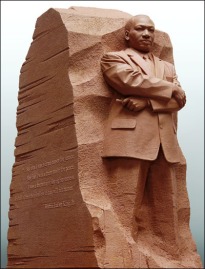 This authentic self typically has the following specific qualities:
This authentic self typically has the following specific qualities:
- The authentic self is independent of social roles, culture and conventions.
- Social roles, culture and conventions are oppressive to the authentic self.
- Creativity, spontaneity, goodness and art are external expressions that flow out from the authentic self. This is self-expression, this is being natural.
- Spirituality adheres in the authentic self, while religion is found in external rules, conventions and dogma.
- We must learn to trust the inner experience and inner vision of the authentic self, that which comes naturally, that which is true to ourselves.
Although the idea of the authentic self accords with the dedication Buddhists have to inner work, to studying the self and forgetting to self, we would be hard pressed indeed to find any of these rather specific statements represented in traditional Buddhist literature, except perhaps that in some accounts of Buddha Nature has a kind of spiritual potential. For many in Asia, in fact, the self is identified primarily in terms of cultural, social and familiar relations. Although the Buddha recommends leaving home and severing social ties for those wishing to go forth into the monastic life, he then places them under rather strong social control.
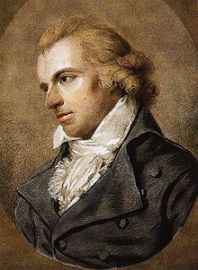 If these statements do not have a Buddhist origin, where did they come from? The answer is … European Romanticism and its later expressions. It is found in people like Locke and Rousseau, Schiller and Schliermacher, representing the idea of human rationality free from social constraints, of morality and wisdom coming directly from the human heart, of naturalness. The disparagement of society and convention was later adopted by Freud, who apparently had no interest whatever in Buddhism. The outflow of the inner self is often taken up in the art of the Romantic era; Wordsworth, for instance, stated that “all good poetry is the spontaneous overflow of powerful feelings.” See McMahan’s Making of Buddhist Modernism and also Thanissaro’s essay “Romancing the Buddha” for more on the Romantic origin of these ideas. Nonetheless these statements are commonly attributed to Buddhism, so they are a part of American Folk Buddhism.
If these statements do not have a Buddhist origin, where did they come from? The answer is … European Romanticism and its later expressions. It is found in people like Locke and Rousseau, Schiller and Schliermacher, representing the idea of human rationality free from social constraints, of morality and wisdom coming directly from the human heart, of naturalness. The disparagement of society and convention was later adopted by Freud, who apparently had no interest whatever in Buddhism. The outflow of the inner self is often taken up in the art of the Romantic era; Wordsworth, for instance, stated that “all good poetry is the spontaneous overflow of powerful feelings.” See McMahan’s Making of Buddhist Modernism and also Thanissaro’s essay “Romancing the Buddha” for more on the Romantic origin of these ideas. Nonetheless these statements are commonly attributed to Buddhism, so they are a part of American Folk Buddhism.
But how well does the Folk Buddhist model of the mind expressed in these statements accord with Essential Buddhism? We can anticipate a similarity: If wires have gotten crossed between Buddhism and European Romanticism then the wires might to some degree look alike. The Folk Buddhist model suggests introspective development of the mind through ridding it of defilements so that something pure shines through. This could as well describe the Essential Buddhism understanding in which that which is skillful and wholesome is encouraged while that which is unskillful or unwholesome is let go. Two ways in which this Folk Buddhist models differs from Essential Buddhism is, first as mentioned, identifying the defilements with cultural or social conditioning and, second, the idea of an authentic self as something that we can not only recognize but that we can listen to.
In Essential Buddhism Buddhist practice always takes place in a social matrix. Surrounding ourselves with kalyanamitta is essential. We take formal vows. As mentioned last week the Buddhist community is designed to support beneficial practice. Most of us meditate together and observe the same schedule during meditation retreats with our co-yogis. Even the fact that the Buddha’s teachings have been transmitted to us through one hundred generations is an achievement of society.
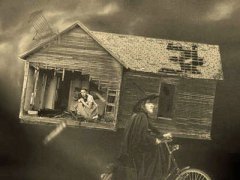 Now we tend to be reasonably cynical and jaded about our culture in the West. Indeed ours is fraught with hazardous influences in its competitiveness, its commodification of everything under the sun, even out relationships with others, its gossip and lies, its greed and swindling, its hatred and violence. But saying “I’ve had it with cultural conditioning!” is a little like surviving a tornado and declaring, “I’ve had it with air!” What will you breathe? In Essential Buddhism defilements rise or fall with our own deeds; we don’t need to trace the specific source of conditions, whether social, inferential, circumstantial or lost in the mists of the past (maybe even past lives), only to make skillful choices now.
Now we tend to be reasonably cynical and jaded about our culture in the West. Indeed ours is fraught with hazardous influences in its competitiveness, its commodification of everything under the sun, even out relationships with others, its gossip and lies, its greed and swindling, its hatred and violence. But saying “I’ve had it with cultural conditioning!” is a little like surviving a tornado and declaring, “I’ve had it with air!” What will you breathe? In Essential Buddhism defilements rise or fall with our own deeds; we don’t need to trace the specific source of conditions, whether social, inferential, circumstantial or lost in the mists of the past (maybe even past lives), only to make skillful choices now.
What is this authentic self? The implication is that we have immediate access to it and that it can be a compass for our outward expression. Like “the self” (atta/atman), if it is even distinct from this, it is rather illusive when we look for it. What we directly experience is the relentless arising and falling of mental factors, some of which on close and detailed examination through practice reveal themselves to be skillful and other not so. Do we bundle the skillful together and call that the authentic self? Essential Buddhism views the natural state of the “uninstructed worldling,” prior to or at the beginning of Buddhist practice, as almost hopelessly mired in greed, hatred and delusion and generally not skilled in recognizing what is skillful or unskillful, beneficial or harmful. If we think we know at an early stage what is our authentic self and what is not what keeps that notion from being a full participant in our world of delusion, in the way “the self” is so implicated in Essential Buddhism? If instead we think of the essential self as a projection forward to the end of the path of practice, then it seems to me that is not so problematic.
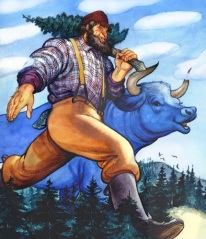 It must be understood that Buddhism is not about self-expression, it is about expressly abandoning a self. Buddhism is about seeing clearly the factors of mind that arise naturally, but then understanding their consequences, recognizing which of them get us into trouble, into entanglement in saṃsāric life, in the life that is an endless problem for self and other, and then to chose to shape the human character accordingly. Buddhism is about looking outside of the box, to see the big picture, to base life in clarity. You can self-express your naturally arising greed, hate and delusion until the cows come home; you will make no progress on the Buddhist path.
It must be understood that Buddhism is not about self-expression, it is about expressly abandoning a self. Buddhism is about seeing clearly the factors of mind that arise naturally, but then understanding their consequences, recognizing which of them get us into trouble, into entanglement in saṃsāric life, in the life that is an endless problem for self and other, and then to chose to shape the human character accordingly. Buddhism is about looking outside of the box, to see the big picture, to base life in clarity. You can self-express your naturally arising greed, hate and delusion until the cows come home; you will make no progress on the Buddhist path.
Next week I may discuss meditation or maybe gender equality in American Folk Buddhism.
June 7, 2012 at 12:58 am |
Great article! Very interesting about how Romantic concepts get mixed up with the teachings.
LikeLike
June 29, 2012 at 1:39 pm |
Bhante,
I’m wondering whether at some point in this series you’re going to discuss the meditation/psychotherapy connection, which seems to be one of the main roads through which “Romantic Buddhism” is being introduced into contemporary American culture.
LikeLike
June 29, 2012 at 5:12 pm |
Hi, Allen. I am pretty much obligated to write something about psychotherapy as an influence on Folk Buddhism; it is such a huge influence. However I don’t know what I am going to write about it yet.
LikeLike
June 30, 2012 at 4:22 pm
Are you familiar with this?
http://www.buddhanet.net/crazy.htm
LikeLike
June 30, 2012 at 4:33 pm |
Alan, Yes, I’ve read that. Patrick Kearney is great, a very clear thinker and writer.
LikeLike